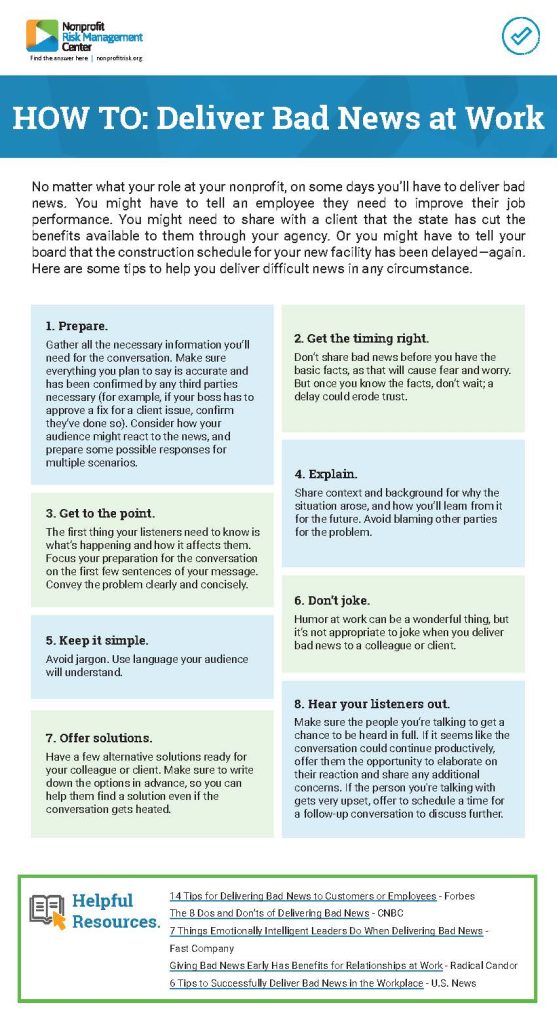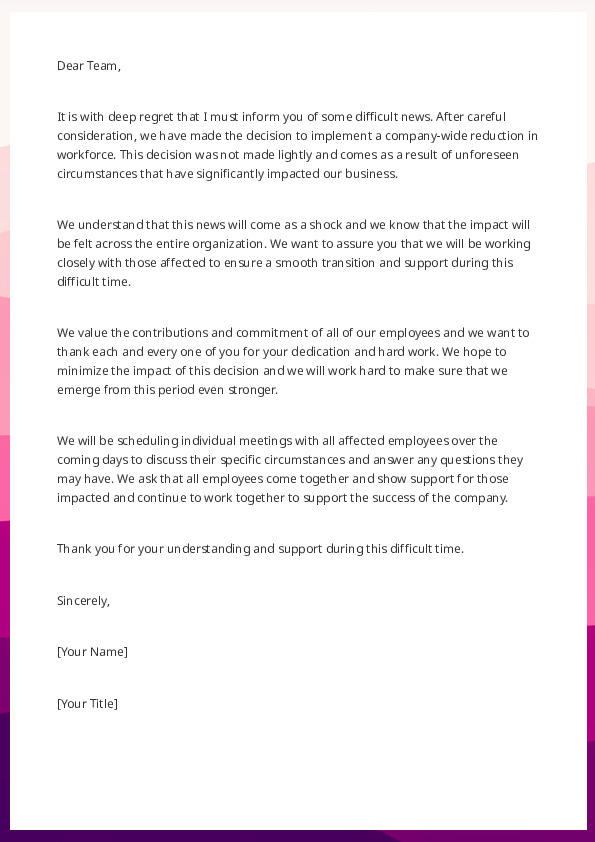How To Deliver Bad News To Employees

The air crackles with unspoken tension. Layoffs loom, a restructuring is underway, or perhaps a crucial project has failed. Delivering bad news to employees is arguably one of the most challenging tasks a leader faces, impacting morale, productivity, and the very fabric of a company's culture.
At the heart of successful bad news delivery lies a combination of empathy, transparency, and strategic communication. This article will delve into the crucial elements of how to effectively communicate negative information, drawing from expert insights and best practices, examining not only the *what* but also the *how* to minimize damage and maintain trust during difficult times.
Preparation is Paramount
Before uttering a single word, thorough preparation is essential. This includes understanding the full scope of the situation, anticipating employee concerns, and formulating clear, consistent messaging.
Consider the legal ramifications and consult with HR and legal counsel to ensure compliance and mitigate potential risks. Transparency, even in difficult situations, builds credibility and fosters trust.
Know Your Audience
Tailor your message to the specific audience. A general announcement may suffice for some news, but individual conversations are often necessary, especially when dealing with layoffs or performance issues.
Consider the emotional impact on different individuals and departments. What works for one group may not work for another.
The Delivery: Honesty and Empathy
Deliver the news directly and honestly. Avoid euphemisms or sugarcoating, as this can be perceived as disingenuous and create further anxiety.
Empathy is key. Acknowledge the impact the news will have on employees and validate their feelings.
Use a calm and respectful tone, avoiding defensiveness or blame. According to a 2023 study by Gallup, employees who feel their leaders care are more likely to remain engaged even during difficult times.
Timing and Location
Choose the timing and location carefully. Avoid delivering bad news on a Friday afternoon or right before a holiday.
Opt for a private setting for individual conversations, and a neutral, comfortable space for group announcements. Ensure minimal distractions during the communication.
Providing Context and Clarity
Explain the reasons behind the decision clearly and concisely. Provide as much context as possible without divulging confidential information.
Connect the decision to the bigger picture, explaining how it aligns with the company's overall strategy. Addressing the "why" can help employees understand the necessity, even if they disagree with it.
Be prepared to answer questions, even difficult ones. If you don't know the answer, acknowledge that and commit to finding out.
Follow-Up and Support
The communication doesn't end with the delivery of the bad news. Follow-up is crucial.
Provide resources and support to help employees cope with the situation. This may include offering outplacement services, counseling, or extended benefits.
Maintain open lines of communication. Encourage employees to ask questions and voice their concerns. According to the Society for Human Resource Management (SHRM), regular communication after a difficult announcement helps rebuild trust and manage anxiety.
Maintaining Morale and Productivity
Recognize that bad news can negatively impact morale and productivity. Take steps to mitigate these effects.
Focus on the future. Communicate the company's vision and strategy moving forward. Reassure employees that the company is committed to their success.
Celebrate successes, even small ones, to boost morale. Acknowledge the contributions of employees and reinforce their value to the organization.
Legal Considerations
Be mindful of legal implications. Consult with legal counsel to ensure compliance with all applicable laws and regulations.
Document all communication, including the rationale behind the decision and the support offered to employees. This documentation can be crucial in defending against potential legal challenges.
Avoid making promises that you cannot keep. This can create legal liabilities and erode trust.
Looking Ahead
Delivering bad news is never easy, but it's a necessary part of leadership. By prioritizing honesty, empathy, and clear communication, leaders can navigate difficult situations while preserving trust and maintaining morale.
The aftermath of delivering bad news provides an opportunity for growth and resilience. By learning from the experience and adapting communication strategies, organizations can emerge stronger and more unified.
Ultimately, how leaders handle these challenges shapes not only the immediate response but also the long-term culture and reputation of the company. Building a culture of open communication, even in the face of adversity, is the cornerstone of a resilient and thriving organization.


















